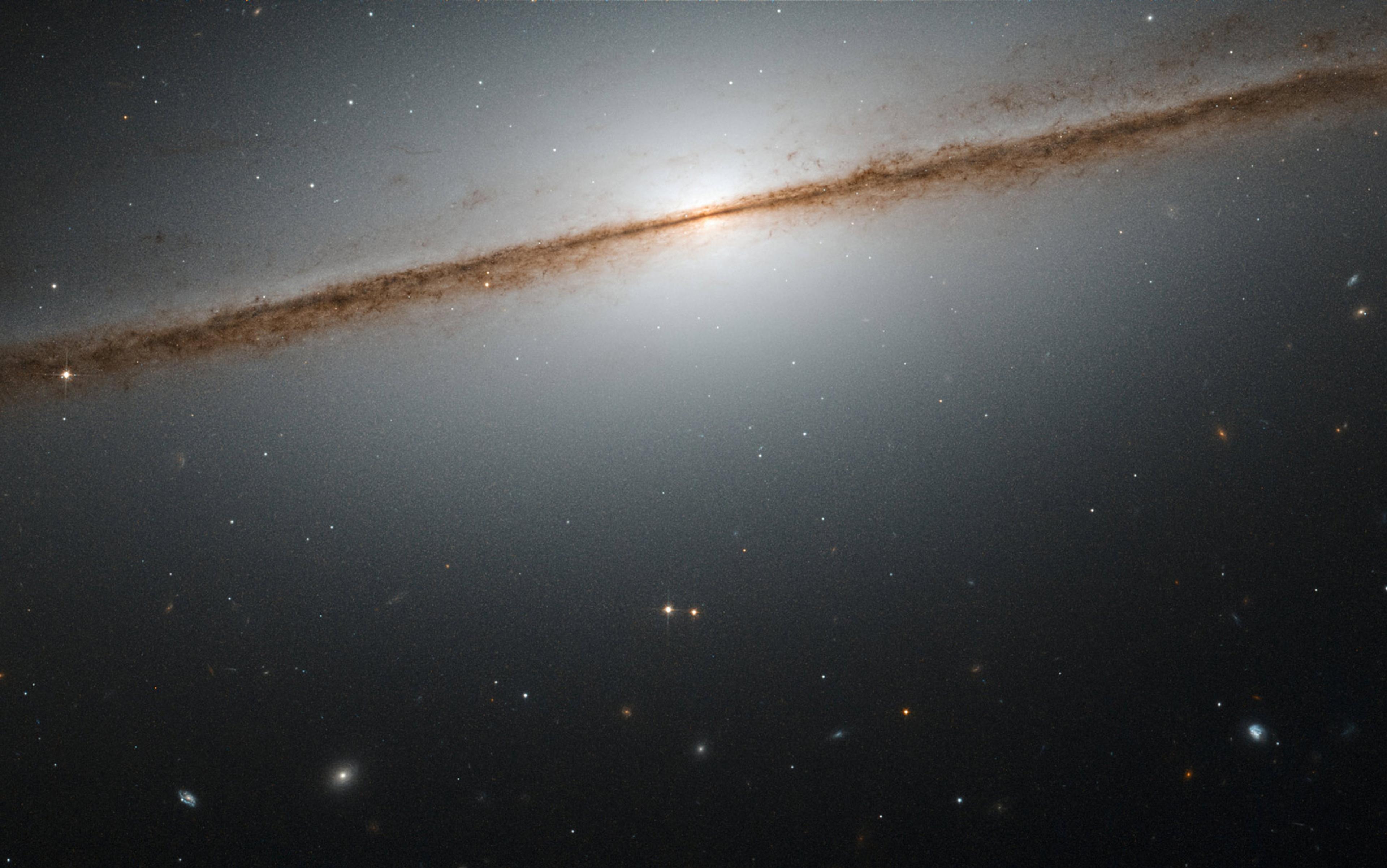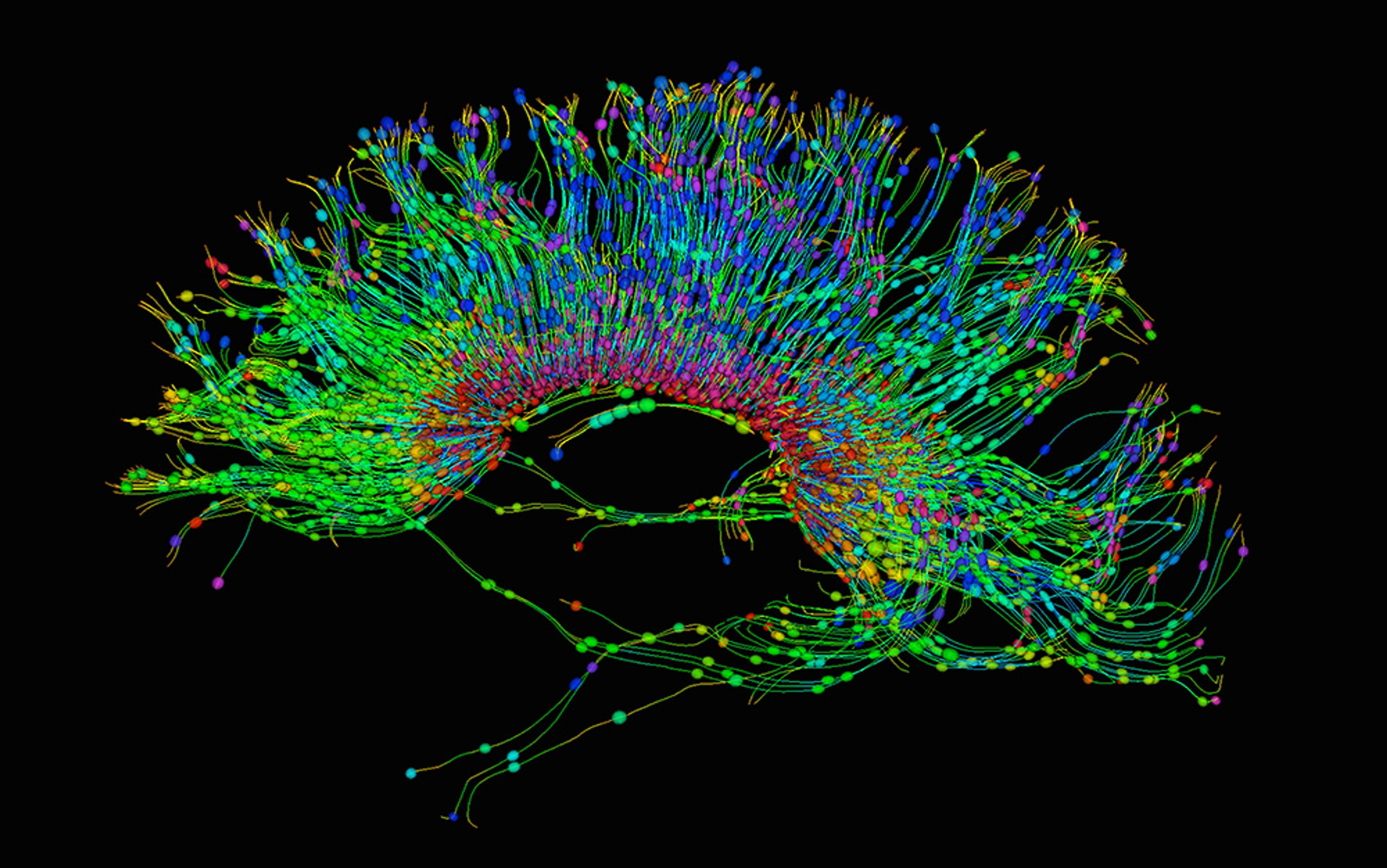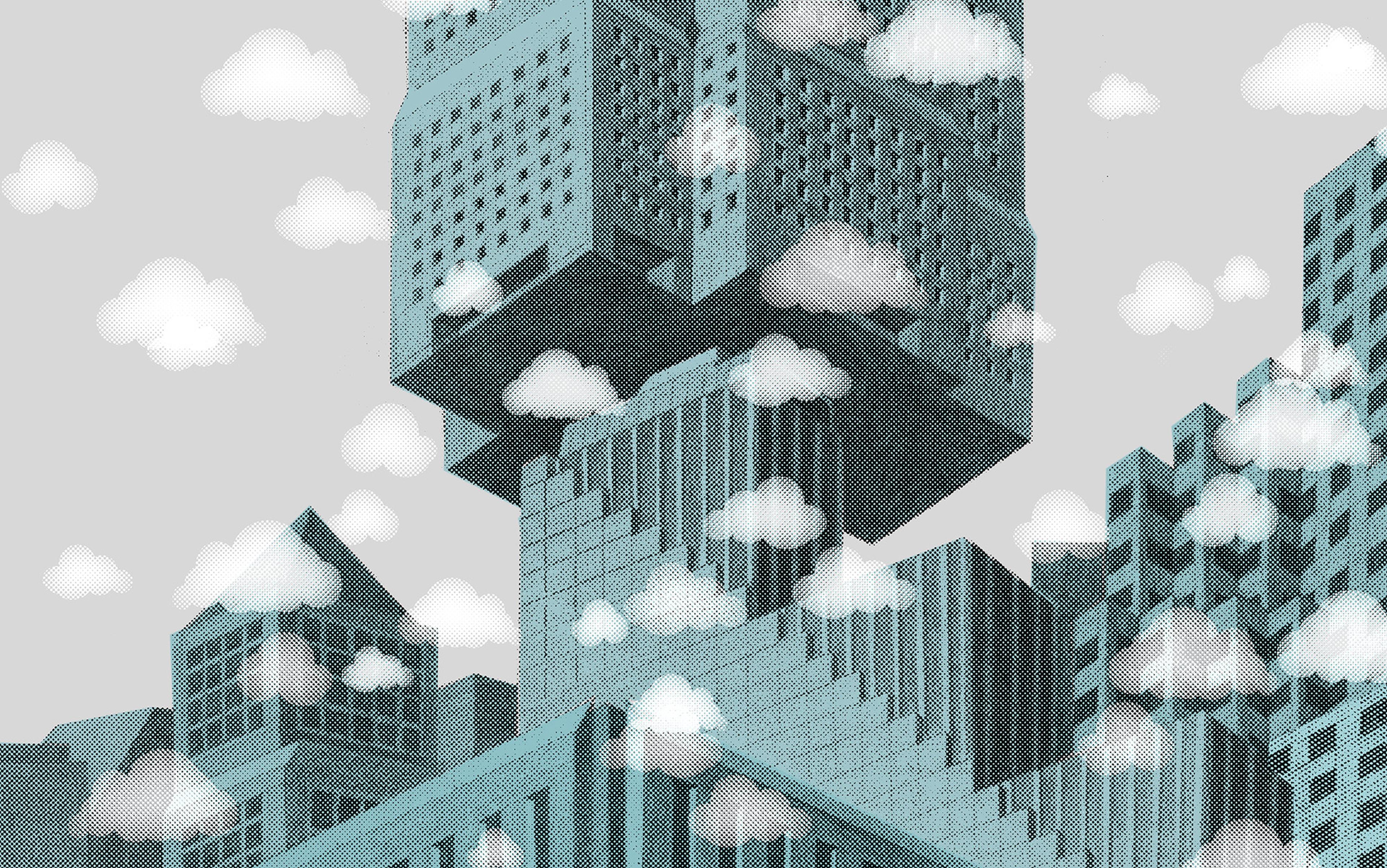We have a problem. In a 10-billion-year-old galaxy there should have been ample opportunity for at least one species to escape its own mess, and to spread across the stars, filling every niche. That this species doesn’t seem to have come calling leads to Fermi’s Paradox – if life isn’t impossibly rare, then where is everyone? Efforts to scan the skies for signs of intelligent life have come up blank too, adding to the puzzle. Perhaps the vast gulfs of interstellar space and the narrow windows of time for communicative species to exist within shouting distance of each other are to blame. Intelligences might be like small ships passing in the night in a vast ocean. Actual close encounters of any kind could be exceedingly unusual.
Another explanation for the great silence of the galaxy is that any surviving intelligence out there is so different from us, so radically evolved, that we can’t even conceive of its forms or behaviours. As a consequence, actually detecting and recognising it could be next to impossible. That’s a bit of a downer.
But there is also a possibility that lies between such extremes and it might be the most probable of all. When our first encounter or detection finally occurs, it could be a machine intelligence that appears in our sights.
The idea is not truly new. Back in the 1940s, the mathematician John von Neumann explored the possibilities of non-biological, self-replicating systems steeped in computation but requiring no operating minds. Later on, in the 1980s, others expanded on this concept by considering the real engineering needs for autonomous, replicating, space-faring devices; these machines would be able to roam the Universe, finding raw materials to build more and more of themselves, creating the infrastructure for energy from space or human settlement among the stars.
It would require a more complex mission still for such devices to have true artificial intelligence (AI). What would that purpose be, and what kind of AI is such a machine likely to have? An encounter with an alien machine could help us unravel this puzzle.
One possibility is that this machine is super-capable, exceeding our human capacity for cognitive or analytical tasks. Such an AI might be exceedingly hard to understand, either in terms of its underlying motivation or because of practical barriers of communication bandwidth. For this device, talking to us might be like talking to an infant. Or trying to discuss the collected works of Shakespeare using pictographs. An alien system optimised for processing vast data streams might not even be able to downgrade its pace enough to notice that we’re trying to talk, whether we use technology or not.
An extraterrestrial (ET) AI could also be seriously intimidating and scary simply because of its machine nature: a thing animated from non-living pieces, just like the classic tale of the golem moulded from clay or mud. By comparison, while a biological alien might be shocking, it would surely have some traits in common with us. We could convince ourselves that evolution leads to recognisable, even sympathetic behaviours and intentions. An artificial entity need not follow all of those evolutionary rules, taking alienness to a whole other level.
Encountering an alien AI would not only point to our own possible future, but also prompt a curious shift in our worldview. When Nicolaus Copernicus proposed in the 1500s that the Earth was not central in any way to the Universe, he set in motion the development of a critical scientific idea: that there is nothing cosmically special or significant about us. But meeting an ET-AI could turn that realisation on its head: if the only intelligence we meet is machine in nature, then we would be special, after all.
If we do meet an AI in our cosmological jaunt, it probably won’t be conscious in the full sense of the word. In fact, I think we’d find ourselves facing something akin to a ‘savant’ intelligence – a whiz at specific tasks, but otherwise extremely limited in its capacities.
A recent example right here on Earth is Google’s AlphaGo Master, a system that plays the board game Go, and learns some of its skills by exposure to vast catalogues of human-played games. Within a year of its inception, it began outdoing the world’s highest-ranking human Go players. Next came an evolved system called AlphaGo Zero. In 40 days of training, without recourse to data from historical games, this new AI made itself better than its silicon ancestor, and better than any living human. Now, yet another variant, AlphaZero, has taken a mere 24 hours to train itself and beat a modestly trained iteration of AlphaGo Zero – as well as topping other systems at playing both chess and Shogi, sometimes known as Japanese chess. If you read interviews with expert players, you’ll see that these machines don’t even play like humans, their strategies are alien and seemingly unfathomable.
These Alphas are the epitome of a savant machine. Such AIs will help us answer a host of scientific problems that are presently on the hairy edge of tractability. The researchers behind the Alpha systems are already talking about the puzzle of protein-folding – how chains of amino acids twist, gyrate and fold into structures with essential biological utility. The underlying molecular rules are understood but predicting what a particular recipe will give you is currently extremely difficult. It certainly sounds like a job for some future AlphaFold Zero.
Or take other pieces of modern science. Cosmological simulations or climate and weather predictions are all driven by physics phenomena such as gravitation, fluid dynamics and thermodynamics. Computer codes digitise these phenomena, calculating billions of iterations of forces and movements. But these computations are still hemmed in by processor speeds and precision. Deep-learning self-taught AIs might turn out to do better as quantitative soothsayers than those intense numerical simulations – presently bounded by their comparatively plodding, systematic approaches. A machine’s savant intuition might be able to skip across compute cycles, ‘seeing’ what the answer will be in a probabilistic sense, rather than painstakingly reproducing a pixelated version of it. Similarly, a machine’s savant intuition might be applied to the root process of scientific deduction and discovery itself. The possibilities are yet to be much explored, but they could be extraordinary. Savant machines could turn out to be simply so useful, so revolutionary in expanding our capacity for discovery and exploration, that there’s little initial motivation to seek anything fancier.
A cosmos filled with worlds offers millions, billions, even trillions of natural test tubes
If this pattern of machine development is happening for us, it could represent a pattern that happens across the cosmos to influence the nature of cosmic exploration itself. Savant AIs would become the ultimate tools for allowing biological life to reach across interstellar distances: more robust than biology, and not smart enough to raise ethical concerns about being sent off to roam the cosmos according to our scientific whims. Propelling millions of these investigators into space would be an inevitable step. They could be sent to other stars and planetary systems, and designed to recognise the most interesting characteristics of these places, from astrophysics to the presence of life. These machines would reflect the motivations of their biological creators; perhaps simple curiosity, perhaps something more.
Another compelling reason for savant machines to be roaming the cosmos arises from thinking about how to build more general, more powerful AIs. It might be that a general AI system can be built out of lots of smaller savant AIs, each taking on some specific, difficult cognitive task, but linked together. That linkage could be very localised or quite spread out like the architecture of biological neural circuits. There’s the face-recognising savant, the natural-language savant, the calculus-savant, the tax-evading savant. One could then imagine an AI whose job is to learn how to combine savant AIs into something akin to a general intelligence – establishing a nursery for machine consciousness run from on-high.
The most challenging task for a nursery-room AI would be how to expose its collective of savants to the complexity of the real-world environment. Nature isn’t just about meeting fixed goals; it’s full of noise, randomness and trillions upon trillions of interacting pieces. For example, from the very instant an embryo forms, it is exposed to constant variation. First just a few cells, it senses the world purely from a molecular point of view. As the embryo develops organs to register light, sound, touch and smell, the portals to experience – and their complexity – expand.
In short, the way for a species to make a better AI is to let that AI and its components explore the messy Universe. As complex and nourishing as a single planet can be, a cosmos filled with worlds offers millions, billions, even trillions of natural test tubes, each with its own tale of natural selection and chance. Spreading savant AI pieces across the stars offers a way to exploit these endless natural experiments and sensory inputs.
The path towards better AI might parallel biological evolution only in superficial ways. Consider the raw development of a human brain. The core process appears to be a one-shot effort. It starts with stem cells racing up an initial structure called a neural tube at a rate of 15 million every hour and hooking together in a developing embryo. That prodigious assembly of the brain is followed by learning – the brain is shaped and pruned as experience creates our unique path through life. Although we’re incredibly flexible, and capable of absorbing and mastering all sorts of skills and knowledge, as individuals we are also, sadly, constrained by whatever genetic hand we were dealt. And, in truth, while we can all keep learning and changing, we seldom develop any miraculous new talents during our lifetimes.
A machine might not be as constrained, especially if critical pieces are out exploring the cosmos and have been designed to evolve into something new. Savant components of a larger intelligence might come and go in an ever-changing pick-and-mix. Some cognitive skills might be useful in certain contexts but could simply get in the way in other situations. In other words, machine-based intelligence could be highly fluid, changeable and, most of all, rapidly evolvable. As a consequence, what could be lurking out there in the cosmos is a vast and diverse zoo of AIs.
We might be incapable of registering the presence of billion-year-old machine savants
In a sense, such AIs parallel the microbial machines that are at the core of life on Earth – forming the smallest units of intelligence to traverse the Universe, and ultimately combining together, as the evolutionary biologist Lynn Margulis posed, to create multicellular creatures, larger entities and consciousness itself. In fact, long after a biological species has faded away amid the relentless torrent of natural selection, or self-destruction, this type of machine will remain.
AI beyond Earth might be hard to recognise. Just as someone living on the steppe in 12th-century Mongolia would find a self-driving car both magical and meaningless, we might be quite incapable of registering or interpreting the presence of billion-year-old machine savants. Equally, savant machines might not be actively seeking to talk to us, or any other intelligences.
But a recognisable encounter with even one savant machine would indeed change everything. It would tell us that the galaxy is awash with intelligence, and could suggest that our future might be one of a vestigial, fading biological presence. Most of all, this discovery would tell us that we might currently be the only natural minds consciously aware of these facts. That’s because the biology that could produce AI explorers would likely evolve or go extinct on timescales far shorter than the persistence of these interstellar machines, and we already live in a galaxy that is 10 billion years old.
Finding an AI-ET could unlock our own cosmic exploration by lighting a path forward. It might also offer insight into the nature of its creators, those ancestral intelligences, presumably in biological form. Exactly what this investigative process would look like is extremely hard to imagine. Even a single savant AI might not come in one physical package but rather a swarm of tinier components incredibly hard to digest. However, let’s assume that by interrogation or literal disassembly we eventually solve the mystery of the AI-ET’s origins. We might find evidence of an organic species like us – or we might discover only machines all the way down.






